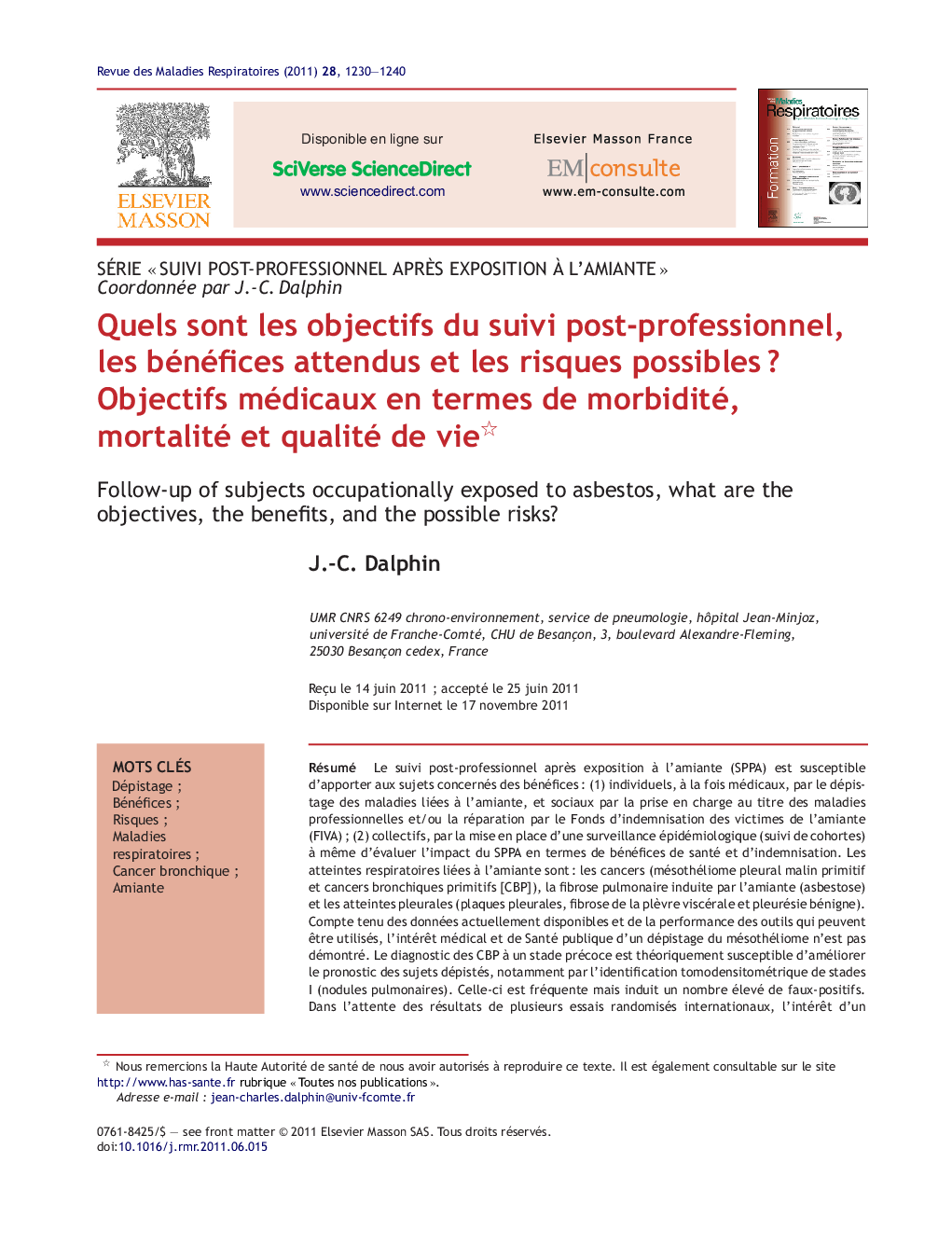| کد مقاله | کد نشریه | سال انتشار | مقاله انگلیسی | نسخه تمام متن |
|---|---|---|---|---|
| 2710178 | 1144994 | 2011 | 11 صفحه PDF | دانلود رایگان |
عنوان انگلیسی مقاله ISI
Quels sont les objectifs du suivi post-professionnel, les bénéfices attendus et les risques possibles ? Objectifs médicaux en termes de morbidité, mortalité et qualité de vie
دانلود مقاله + سفارش ترجمه
دانلود مقاله ISI انگلیسی
رایگان برای ایرانیان
کلمات کلیدی
موضوعات مرتبط
علوم پزشکی و سلامت
پزشکی و دندانپزشکی
کاردیولوژی و پزشکی قلب و عروق
پیش نمایش صفحه اول مقاله

چکیده انگلیسی
The follow-up of workers occupationally exposed to asbestos has two possible beneficial effects: (1) individually, both medical by screening for diseases related to asbestos and social by notification of occupational disease and/or compensation from the indemnity funds for asbestos victims; (2) collectively, by the establishment of epidemiological surveillance (follow-up of cohorts) and evaluation of the impact of follow-up in terms of health benefits and compensation. The respiratory disorders related to asbestos are: cancer (malignant pleural mesothelioma and bronchial carcinoma), asbestos-related pulmonary fibrosis, and pleural disease (plaques, pleural fibrosis and benign pleurisy). In the light of the data currently available and the effectiveness of the tools used, medical and public health benefits of screening for mesothelioma have not been demonstrated. The early diagnosis of primary bronchial carcinoma can theoretically improve the prognosis of the subjects screened, particularly by identification of stage I disease on CT (pulmonary nodules). This is a common finding but there are a large number of false-positives. While we await the results of several international randomised trials, the benefits of a screening programme for bronchial carcinoma in the population at risk have not been demonstrated. There is no effective treatment for asbestosis but this is an independent risk factor for bronchial carcinoma and it is evidence of heavy asbestos exposure. Stopping smoking in subjects suffering from asbestosis will reduce the incidence of bronchial carcinoma. There is no effective treatment for asbestos-related benign pleural diseases but these are markers of exposure. The presence of pleural plaques has not been shown to be an aetiological factor for thoracic cancers. Post-occupational follow-up may involve risks to health, particularly repeated irradiation and invasive diagnostic procedures. It is also necessary to consider the psychological consequences inherent in all screening programmes. In conclusion, post-occupational follow-up might reduce the mortality of lung cancer by screening for localised disease and its incidence by a targeted anti-smoking programme. The theoretical benefits, that have not yet been demonstrated, have to be seen in perspective with the risks to physical and psychological health related to both screening and diagnostic procedures.
ناشر
Database: Elsevier - ScienceDirect (ساینس دایرکت)
Journal: Revue des Maladies Respiratoires - Volume 28, Issue 10, December 2011, Pages 1230-1240
Journal: Revue des Maladies Respiratoires - Volume 28, Issue 10, December 2011, Pages 1230-1240
نویسندگان
J.-C. Dalphin,